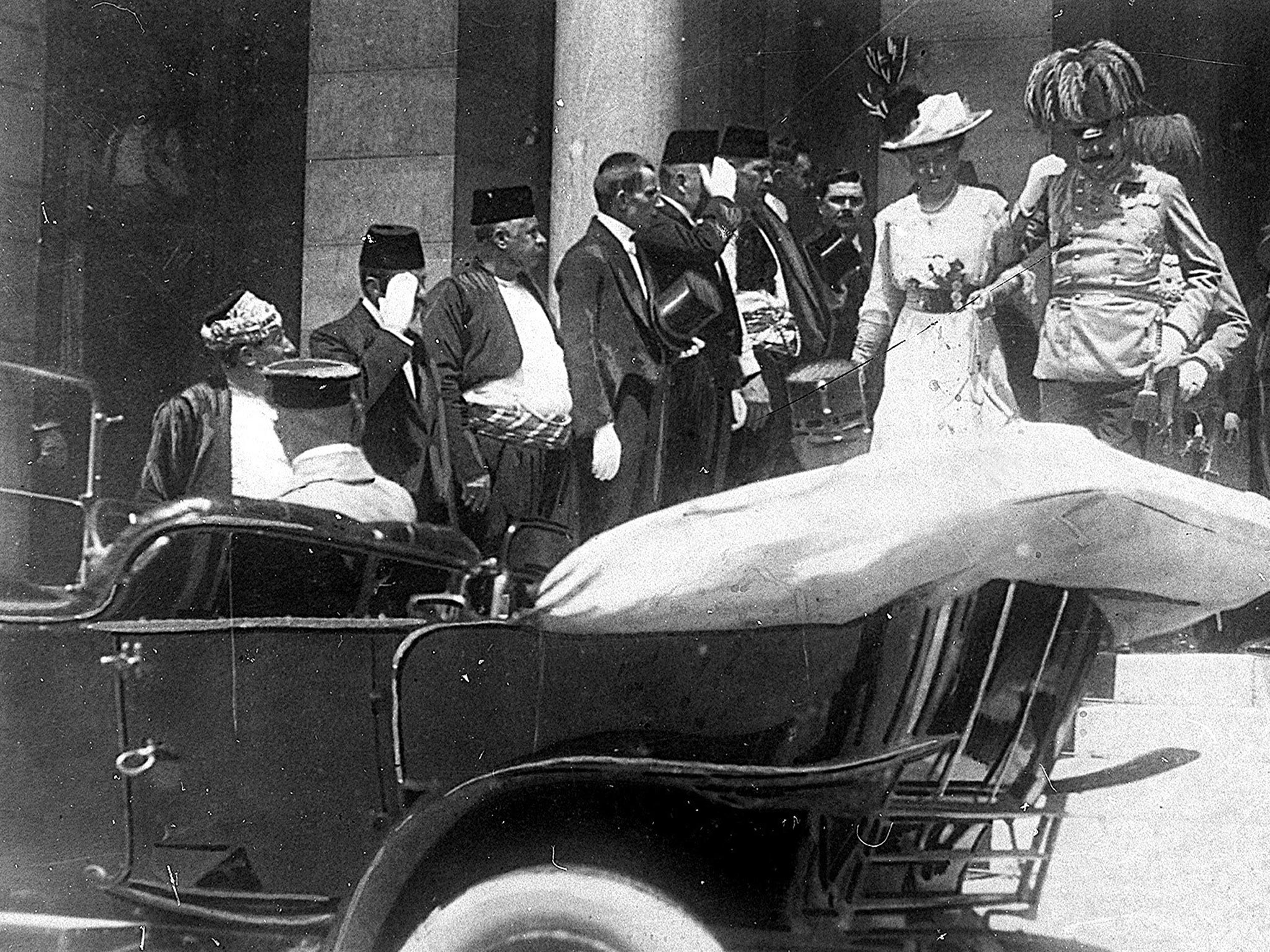100 years since the assassination of Archduke Franz Ferdinand: How did shot spark the First World War?
Who shot Franz Ferdinand and how did it start a war?

Your support helps us to tell the story
From reproductive rights to climate change to Big Tech, The Independent is on the ground when the story is developing. Whether it's investigating the financials of Elon Musk's pro-Trump PAC or producing our latest documentary, 'The A Word', which shines a light on the American women fighting for reproductive rights, we know how important it is to parse out the facts from the messaging.
At such a critical moment in US history, we need reporters on the ground. Your donation allows us to keep sending journalists to speak to both sides of the story.
The Independent is trusted by Americans across the entire political spectrum. And unlike many other quality news outlets, we choose not to lock Americans out of our reporting and analysis with paywalls. We believe quality journalism should be available to everyone, paid for by those who can afford it.
Your support makes all the difference.A hundred years ago today, a teenager fired the bullet that sparked the chain of events leading to the First World War.
The assassination of the Austrian Archduke Franz Ferdinand on 28 June 1914 came as tensions between European powers were reaching boiling point over their empires, military superiority and the struggle for home rule by smaller nations in the Balkans.
In Bosnia, a 19-year-old Bosnian Serb, Gavrilo Princip, was one of many angry young men wanting to free his country from the control of Austria-Hungary.
It had been annexed from the Ottoman Empire six years before.
Archduke Ferdinand, the heir to the throne of Austria-Hungary, was visiting Sarajevo to inspect imperial forces with his wife Sophie.
His parade through the town coincided with the anniversary of the 1389 Battle of Kosovo, which had come to be a symbol of Serbian patriotism, and the timing was seen as a direct insult to Serbians.
A group of six assassins, including Princip, had planned the assassination as a symbol of resistance to Austro-Hungarian role and gathered along the parade route.
Several members of the group failed to take their chances to kill the Archduke as he travelled through crowds with little security in an open car and a bomb thrown by Nedeljko Čabrinović bounced off the vehicle.
He carried on to a scheduled reception at the Town Hall, where he spoke of the failed assassination, before leaving again in a motorcade.
When the driver of Archduke Ferdinand’s car took a fateful wrong turn off Appel Quay, he was ordered to reverse and stopped directly in front of Princip.
He fired two shots, hitting Franz Ferdinand in the jugular and his wife Sophie in the abdomen, killing them both.
The double murder shocked Europe and led to anti-Serbian riots in Sarajevo.
Days later, Austria-Hungary issued Serbia with an ultimatum, blaming the Government for the assassination and demanding it stopped all anti-Austro-Hungarian propaganda, accept its involvement suppressing rebels and allow it to take over trials of everyone involved in the assassination.
When the Serbian Government refused two of the demands, Vienna considered the ultimatum rejected.
Austria-Hungary declared war on Serbia on July 28 and the tangle of national alliances pulled the rest of Europe into the conflict within days and the First World War began.
Join our commenting forum
Join thought-provoking conversations, follow other Independent readers and see their replies
Comments